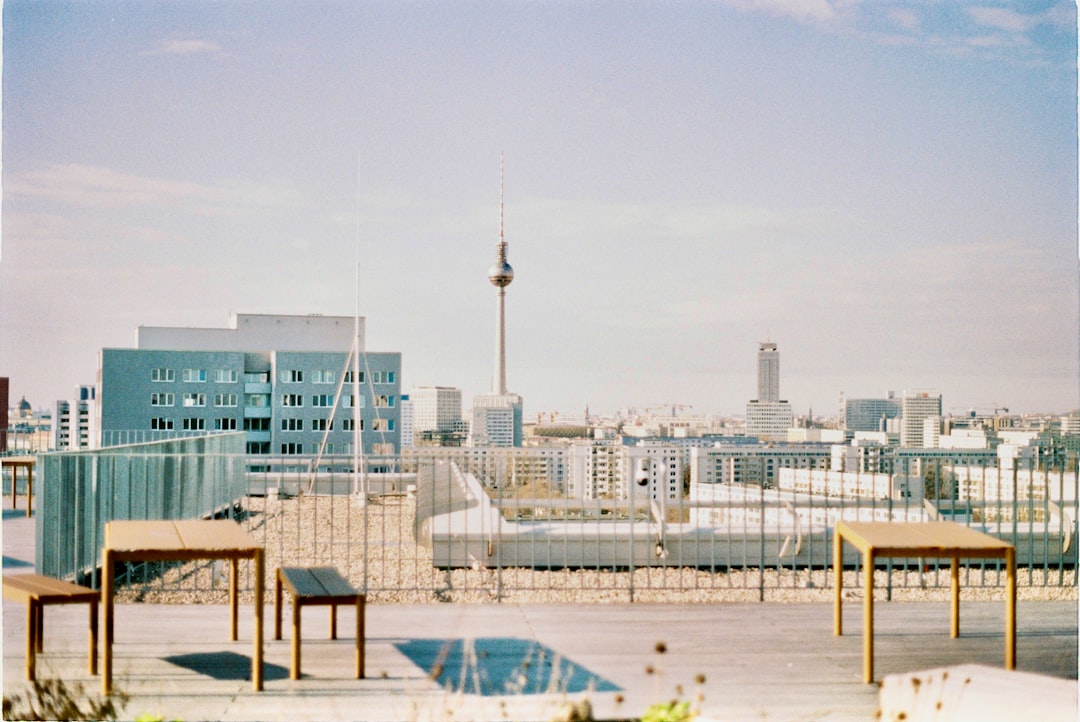Your 48-Hour Berlin Power Itinerary
This plan is designed for maximum experience with minimum wasted time. We’ll focus on two core themes: Day 1 covers the historical and political heart of reunited Germany, while Day 2 explores the vibrant clash of Cold War history and modern creativity.
Day 1: The Historical Heart of a Reunited Nation
Begin your exploration in the central Mitte district, where Germany's past and present converge. This entire area is walkable, allowing you to absorb the gravity of each location.
1. Brandenburg Gate
What it is: More than just Berlin's most famous landmark, the Brandenburg Gate is the ultimate symbol of victory over division. During the Cold War, it stood in an inaccessible no-man's-land, a daily reminder of a city torn in two. Today, walking through its grand columns is a powerful act, celebrating the freedom and unity that digital nomads cherish.
Admission: Free.
2. Reichstag Building
What it is: Just steps from the Brandenburg Gate, the Reichstag is the seat of the German Parliament (Bundestag). Its most stunning feature is the massive glass and steel dome added in the 1990s. Ascending the spiral walkway inside offers not only panoramic city views but a potent architectural metaphor: a modern, transparent democracy built directly upon the foundations of a turbulent history.
Nomad Tip: Access is free, but online pre-registration is mandatory and spots fill up weeks in advance. Book on the official Bundestag website before your trip.
Hours: Daily from 8:00 AM to 9:45 PM.
3. Memorial to the Murdered Jews of Europe (Holocaust Memorial)
What it is: A deeply moving and disorienting field of 2,711 concrete slabs (stelae) of varying heights. The memorial is designed to be entered from any side, and as you walk deeper, the ground undulates and the stelae tower over you, creating a sense of confusion and isolation. It’s a space for quiet reflection on history's profound lessons. The underground Information Centre provides crucial historical context.
Admission: Free for both the memorial field and the exhibition.
4. Victory Column (Siegessäule)
What it is: Visible from the Brandenburg Gate, this 67-meter column offers one of the best affordable views in Berlin. After climbing the 285 steps, you're rewarded with a stunning perspective over the vast Tiergarten park and the city's main historical axis. It's a great spot to get your bearings and appreciate the city's scale.
Admission: Around €3.50.
Day 2: The Creative Scars of the Cold War
Today is about the legacy of the Berlin Wall and the vibrant culture that has flourished in its absence. We head east to explore the frontier of the Cold War and the art it inspired.
5. East Side Gallery
What it is: This is a must-see for any creative or free spirit. A 1.3 km-long section of the Berlin Wall has been preserved as the world's largest open-air gallery. Immediately after the wall fell, artists from all over the globe covered it in murals celebrating freedom, hope, and political commentary. Iconic works like Dmitri Vrubel's "Fraternal Kiss" make this a powerful intersection of history and art.
Admission: Free and open 24/7.
6. Checkpoint Charlie
What it is: The most famous border crossing between East and West Berlin. While it's now a heavily touristed spot, it serves as a stark, tangible reminder of the tensions of the Cold War. The nearby Wall Museum is a worthwhile investment, detailing the incredible ingenuity and bravery of those who attempted to flee the GDR, with exhibits on escape cars, tunnels, and forged documents.
Museum Admission: Adults €17.50, Students €11.50.
7. Museum Island (Museumsinsel)
What it is: A UNESCO World Heritage site, this island in the Spree River houses five world-class museums. Even if you're not an art historian, the architectural grandeur and the sheer scale of the collections (from the famous Nefertiti Bust in the Neues Museum to the Pergamon Altar) are awe-inspiring.
Nomad Tip: If you plan to visit more than one museum, the combo ticket (€24) is the most efficient and cost-effective choice. It's a deep dive into centuries of human creativity.
8. Alexanderplatz & TV Tower (Fernsehturm)
What it is: The sprawling heart of former East Berlin, "Alex" is a hub of transport and commerce. Dominating the skyline is the TV Tower, an iconic piece of GDR-era architecture and, at 368 meters, the tallest publicly accessible building in Europe. Head up to the observation deck for an unbeatable 360-degree view, giving you a final, strategic overview of the city you've just explored.
Admission (Tower): From €22.50. Consider the Fast View Ticket to bypass queues if you're short on time.
Efficient Transport for Nomads
Berlin's public transport is world-class. The best way to navigate the city is with the U-Bahn (subway) and S-Bahn (suburban trains). Purchase a 24-hour or 48-hour ticket for unlimited travel. For shorter trips, e-scooter and bike-sharing services from providers like Lime, Tier, and Bolt are ubiquitous and perfect for exploring specific neighborhoods.































